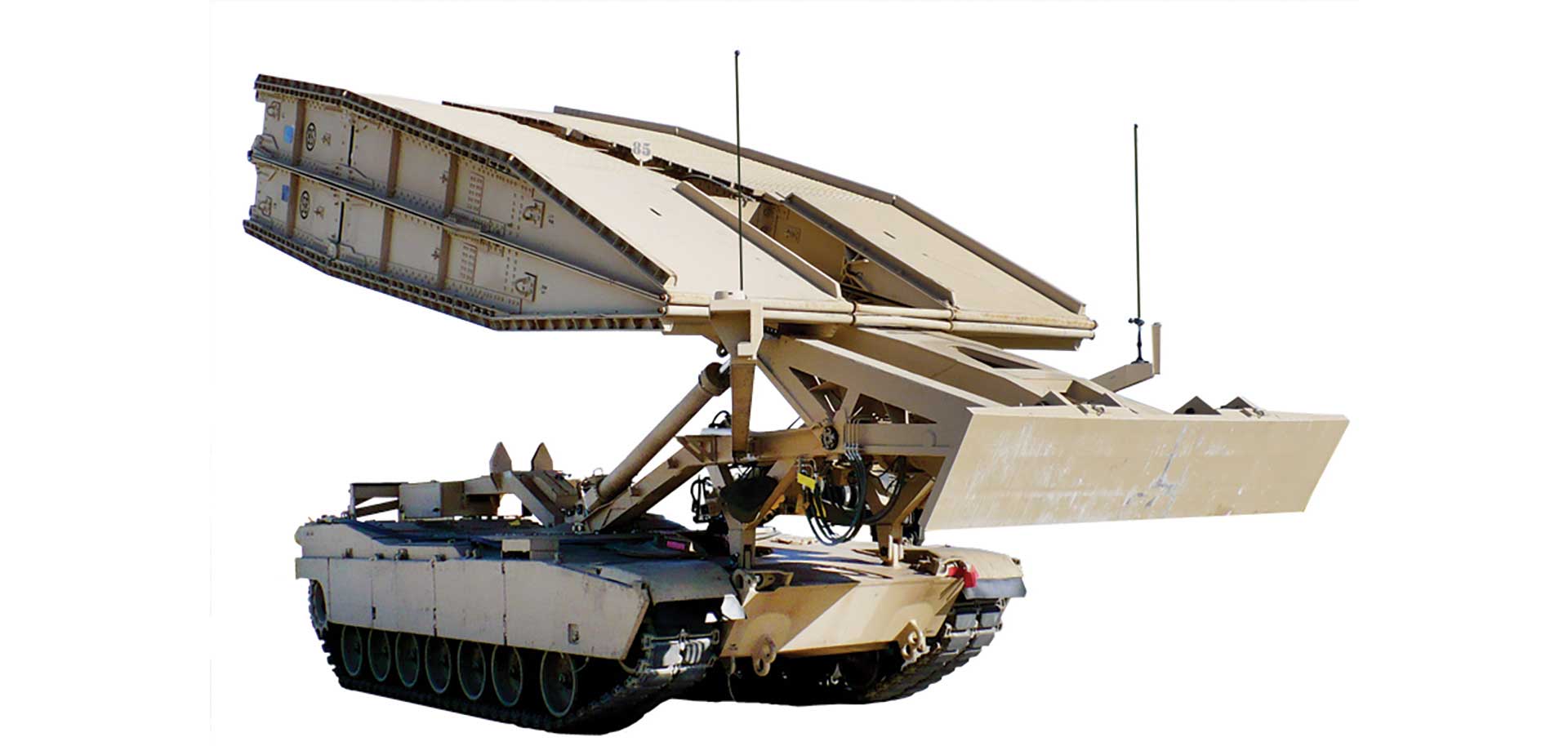
The Joint Assault Bridge will replace the Army’s Armored Vehicle Launched Bridge for armored BCTs.
For the Army’s Armored Brigade Combat Teams (ABCTs), the ability to conduct wet and dry gap crossings over rivers and gullies in both Western and Eastern Europe is not a bridge too far, but a bridge too few. Throughout that area of operation, an advancing army can expect to meet smaller water obstacles every 20 km, large 100-meter-wide water obstacles every 35-60 km, and significant 100-400-meter-wide rivers every 250-400 km. Neither the U.S. nor Europe has a sufficient quantity of bridging systems to address even a small faction of those obstacles.
“(There are) insufficient NATO bridge systems in Europe with sufficient military load classification capability, system interoperability, or quantity to bridge required wide wet gaps in support of main battle tanks or heavy sustainment loads,” according to LTG Todd Semonite, chief of engineers and commanding general of the Army Corps of Engineers, speaking this week at the AUSA convention. “The ability of a river to be able to bring an army to its absolute knees has been something that has devastated a lot of forces” going back to China 2,000 years ago, observed Semonite.
The problem is particularly acute in the region from Germany to Estonia in Eastern Europe where there are six major rivers (the Danube, Volga, Rhine, Elbe, Oder, and Dnieper rivers) and more than 4,500 bridges–800 of which are longer than 100 meters. If only one percent of those bridges were degraded, 5,500 meters of military bridging would be required to replace them, according to Semonite.
The other concern is that today’s modern battle tanks are too heavy for many of Europe’s bridges.
“(There are many bridges throughout Europe) where you can’t take vehicles that are over MLC (Military Load Classification) 70,” said Semonite, referring to a 70-ton vehicle. “When you look at the different types of systems we have most (are) over MLC 70.”
Germany’s Leopard tanks are about 80 tons, British Army Challenger 2s are about 95 tons, and the U.S. Abrams tanks are at about 91 tons, said Semonite.
“Most of the bridging in Europe and the NATO countries is less than 70,” he said, noting that a division needs four crossing sites and a Brigade Combat Team needs two. “If you took all the bridging in NATO and put it together we couldn’t get a Brigade Combat Team across a 400-meter river. We have a real challenge out there. What are we going to do as an army even if we had the NATO resources to be able to align and project power to defeat the enemy?”
Modernizing the Army’s Bridging Systems
One of the answers to that question is the Joint Assault Bridge (JAB), which will replace the Army’s Armored Vehicle Launched Bridge (AVLB). First built in 1962, the AVLB is still active in BCT’s today, and is “old, arcane equipment that continues to give us challenges,” said Semonite.
DRS, the progenitor of today’s Leonardo DRS, was the original prime contractor for AVLB and built approximately 900 of them with attached, folding, scissor bridges. These systems were based on both the M48 and M60 Patton main battle tank chassis.
The new JAB will also be built by Leonardo DRS under a $400 million Army contract to produce up to 273 JAB systems plus related testing and support. The program is presently in the low rate initial production phase, and the JAB will replace the AVLB system (chassis and launcher) on a one-for-one basis.
The JAB system is a track-wheeled vehicle built on a modified M1 Abrams chassis for compatibility with existing BCT formation. It is designed to provide freedom of maneuver on the battlefield and keep pace with Abrams ABCT operations. Integrated on top of the vehicle is a hydraulic bridge launcher system to carry, deploy, and recover a Military Load Class 95 scissor bridge that spans 18.3 meters and provides gap-crossing capability for combat vehicles to cross wet or dry chasms.
Leonardo DRS has a public-private partnership with Anniston Army Depot for the management of the chassis assembly, and also worked with IMI Systems (formerly Israel Military Industries) on the engineering and design of the JAB. It is powered by Honeywell’s improved AGT1500 Tiger engine the main powerplant for the Abrams.
Move over FARA: General Atomics pitching new Gray Eagle version for armed scout mission
General Atomics will also showcase its Mojave demonstrator for the first time during the Army Aviation Association of America conference in Denver, a company spokesman said.



























